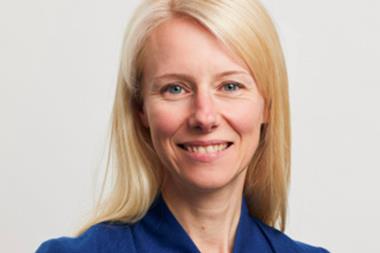As the UK’s Financial Reporting Council consults on updates to the country’s Stewardship Code, Hans-Christoph Hirt, trustee director of the Hermes Group Pension Scheme and former managing director, sustainable investing at UBS Asset Management, says it’s time for the investment industry to have an open conversation about the objectives of stewardship and what that means for incentives
Twenty years ago, when I started at Hermes’ activist Focus Funds, engagement aimed to drive changes that protected or enhanced value for companies, shareholders and end beneficiaries. Asset owners, portfolio managers and financial analysts were all aligned in this objective. Today, this alignment has weakened throughout the investment chain and within asset managers.
Too much engagement lacks a clear business case, alignment with the investment thesis, or evidence demonstrating how its objectives will enhance returns for end beneficiaries over time.
In the UK, the Stewardship Code is under review by the Financial Reporting Council (FRC). Last month, it issued a consultation paper, quietly dropping the acronym ESG from the Code and proposing a new definition of stewardship. While this is likely to grab attention, it is more important to develop a common understanding between asset owners and managers regarding stewardship objectives and the effectiveness and limitations of different engagement activities.
In an analysis of the changes between the UK’s 2010 and 2020 Stewardship Codes, professor Paul Davies, a leading corporate law scholar at the University of Oxford, questioned whether the objective of stewardship had shifted from ‘saving the company’ to ‘saving the planet’. While the choice is not necessarily one or the other, the industry needs to reemphasise its focus on end beneficiaries and be clearer about the effectiveness of different types of stewardship. This requires better research and analysis on the likely outcomes of different activities in achieving stewardship objectives, as well as a robust conversation about this across the investment chain.
Investors pursue two main objectives in return-focused company engagement. Alpha-enhancing outcomes improve company and portfolio performance by addressing the most material issues over a foreseeable period, such as capital allocation, executive and board leadership, or decarbonisation to address idiosyncratic risks.
Systemic risk-focused engagement targets real-world outcomes, mitigating risks like climate change that impact overall market returns over time, for example, encouraging decarbonisation to reduce the macroeconomic impact of global warming.
While these objectives can overlap, significant trade-offs exist, particularly over different time horizons given the policy and regulatory framework in which investors and companies operate.
Company engagement is a key aspect of stewardship, but it has significant limitations for systemic risks, like climate change, because rapid decarbonisation may conflict with shareholder value. That’s why macro-stewardship is critically needed here.
Who is motivated to engage?
The primary goal of stewardship is to enhance returns across different time frames – whether through portfolio-specific interventions or market-level improvements – for the benefit of end beneficiaries.
Universal ownership theory can justify addressing systemic risks, such as climate change, but challenges arise in estimating stewardship’s potential benefits in terms of market returns. The impact of such risks is difficult to quantify, materialises over long time horizons, and is subject to changes in policy, regulation, and technology. Even if investors enhance longer-term market returns, the benefits mostly flow to asset owners and end beneficiaries, rather than to asset managers, given how they are compensated for their services.
Meanwhile, the costs of addressing systemic risks through company engagement are quantifiable and borne largely by asset managers, who face mounting pressures on business models and margins.
This creates a misalignment between asset owners and managers over both the benefits and the costs of engagement focused on systemic risks. Active asset managers, focused on creating alpha over foreseeable periods and relative rather than absolute returns of their portfolios, and index funds, which compete on costs, are not adequately incentivised to tackle systemic risks impacting market returns.
“Even if investors enhance longer-term market returns, the benefits mostly flow to asset owners and end beneficiaries, rather than to asset managers”
This misalignment is further exacerbated by the ‘free rider’ problem: if some firms engage in systemic risks while others do not, everyone benefits, but the costs fall on the few who engage.
How are we achieving change?
While engagement can be effective regarding company-specific issues, systemic risks require macro-level interventions. For climate risks, policy and regulation that shift the economics of climate mitigation and solutions are necessary to transform the operating framework. Value-chain and sector engagement initiatives addressing industry-wide challenges should also be part of investors’ toolkits, but they require resourcing with relevant experience and skills that are not typically found in the industry.
It is very telling how few investors have developed a coherent stewardship strategy aligned with their business model. This should articulate how their activities at the company and policy level contribute to achieving their overarching stewardship objectives, including on climate. A well-defined theory of change would explain the causal chain connecting actions pursued to specific outcomes, along with the assumptions and required framework conditions. From an asset owner perspective, this would enable a high-level assessment of alignment with asset managers, adding significant value to stewardship reporting.
More sophisticated macro-level stewardship will be critical in creating a policy and regulatory framework that supports major sustainability transitions. However, asset managers lack adequate incentives to resource and excel in such activities, which are often carried out by regulatory teams that may promote positions not aligned with asset owners.
The way forward
To advance stewardship, the industry needs an open conversation about its principal objectives, the trade-offs involved in achieving them, and the inherent limitations of company engagement alone.
A shared understanding across the investment chain is essential – one that includes the effectiveness, investment and real-world impact, benefits and costs of engagement. This will require an alignment of investment and stewardship objectives, even when spanning different time horizons. Regarding systemic risks, investors should articulate more clearly how their activities will contribute to achieving their sustainability-focused stewardship objectives, enhancing outcomes for end beneficiaries.
Building on this, asset owners could set more specific expectations in investment mandates and, through their appointment of asset managers, contribute to the funding of adequately resourced and impactful engagement at the company and macro level.
Engagement should return to first principles, aiming to enhance quality and impact by driving value for companies and shareholders, which ultimately benefits asset owners and end beneficiaries. While investors can also play a greater role in ‘saving the planet’, this primarily requires a more sophisticated approach to macro-stewardship. Such an approach can help create a framework in which sustainability issues, including systemic risks, become material, reducing trade-offs between high-level stewardship objectives. This would strengthen investors’ capacity to enhance the value of the companies they invest in while also contributing to real-world environmental and societal outcomes.
Hans-Christoph Hirt, trustee director of the Hermes Group Pension Scheme, is a former managing director, sustainable investing, at UBS Asset Management and ex-head of EOS at Federated Hermes




















No comments yet